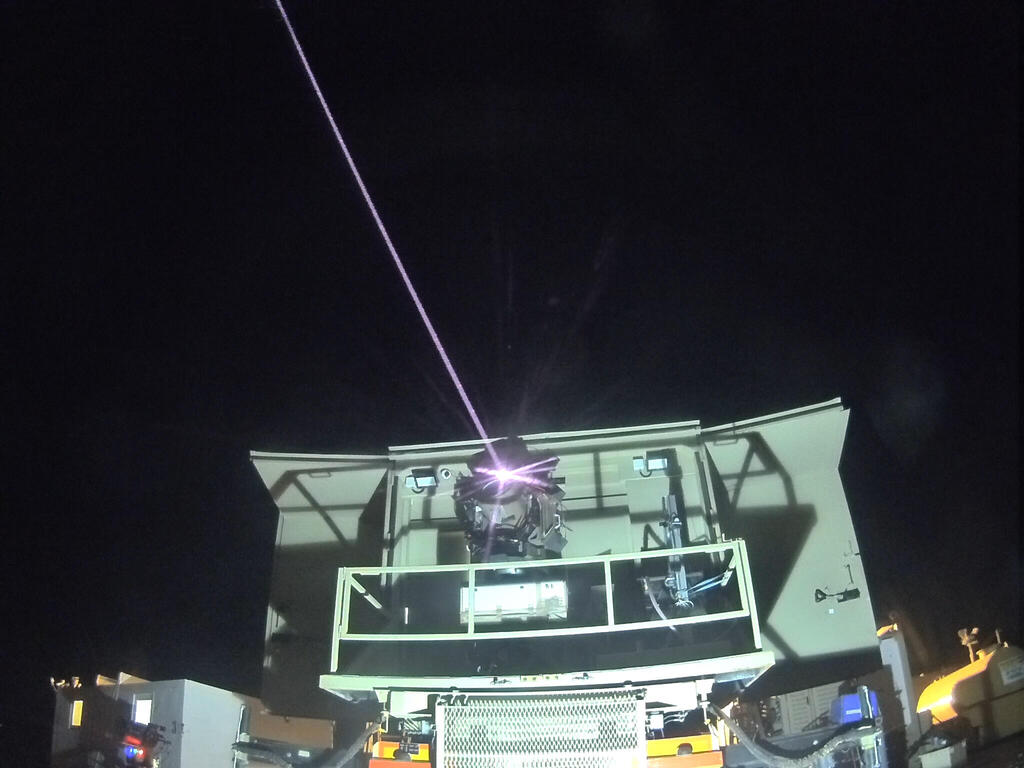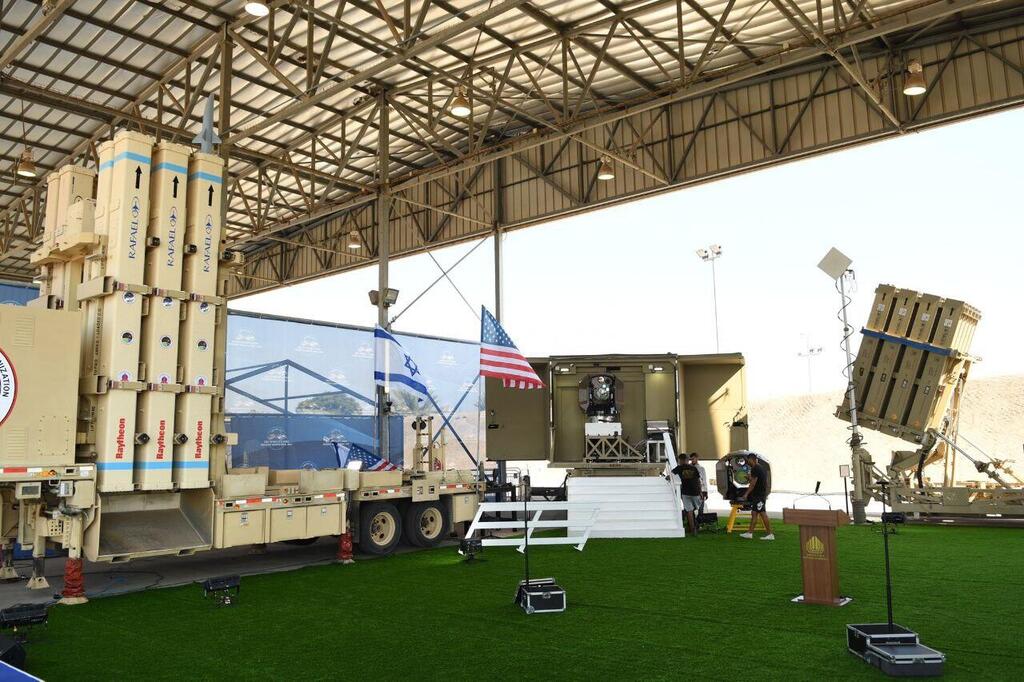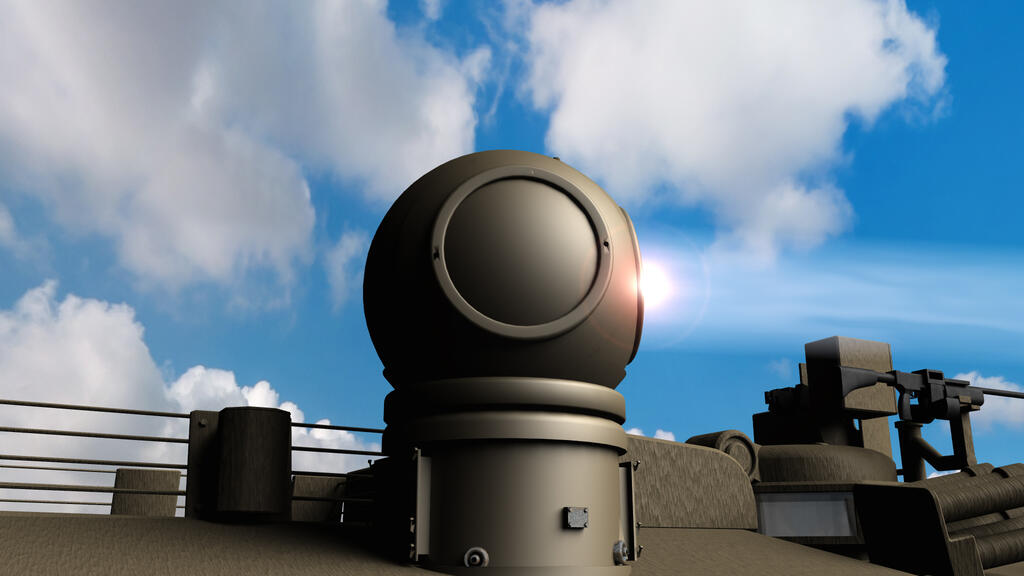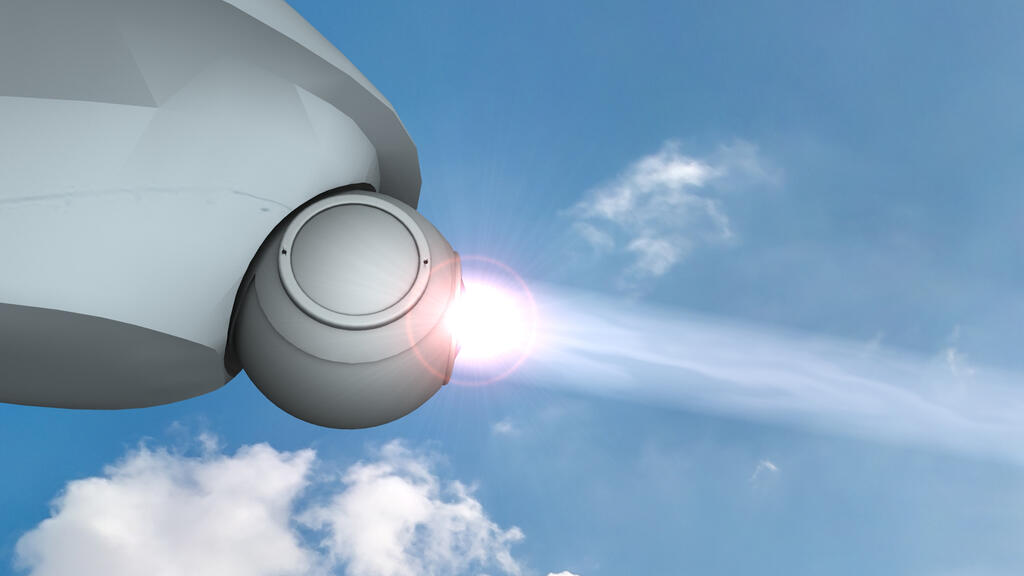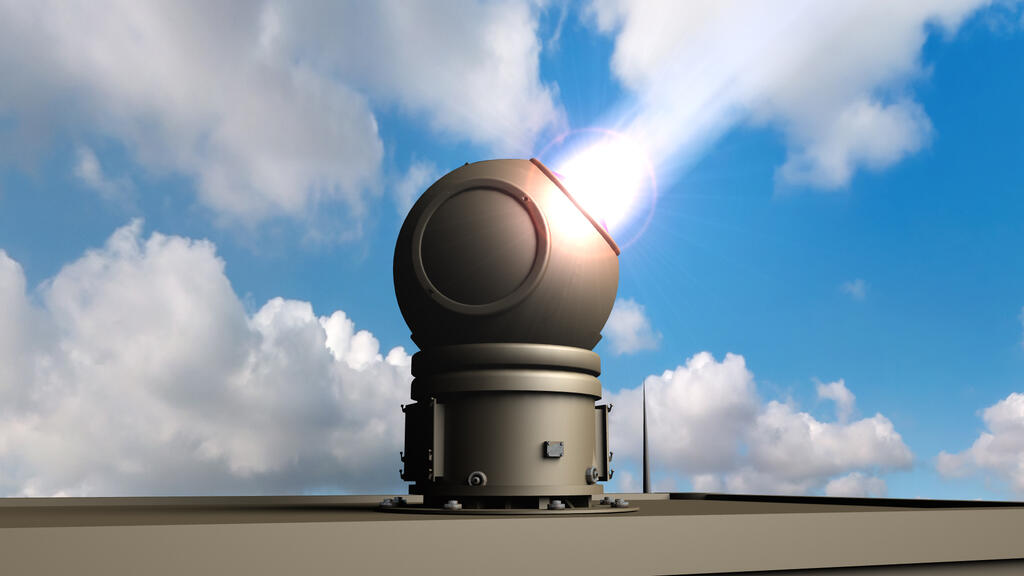The rockets, missiles and drones launched at Israel by Hezbollah from Syria and by the Houthis from Yemen are met by various defense systems “talk” to one another in real-time. They coordinate and assign one another interception tasks utilizing the multi-layered defense system developed over 15 years and costing billions of dollars.
More stories:
Israel entered the Gaza campaign with the world’s densest and most developed anti-rocket and anti-missile defense system. It can detect, identify and intercept everything from short-range mortars firing no more than a few miles through to long-range ballistic missiles with huge warheads weighing around half a ton.
Future systems draw on lessons learned from this war and will include significantly expanding at least three new interception systems currently in the development stages. Of these systems, the most groundbreaking is Rafael’s Iron Beam which uses high-powered lasers designed to intercept rockets, drones, mortars and anti-tank missiles.
For the past 17 years, over one hundred R&D engineers at Rafael have been working on Iron Beam. A pioneering team, led by Dr. Yochai Amal, has been developing a system designed to intercept short-range targets in flight at the speed of light with a never-ending cartridge at almost zero cost.
Through years of trial and error, Rafael's development team has recorded a series of technological achievements that, at the beginning of this year, led to the experimental deployment of Iron Beam in the Negev region, testing its capabilities in real conditions.
At Rafael, they’re pleased with the results. Iron Beam has successfully dealt with rockets, mortar barrages and unmanned aircraft. These trajectories were brought to the ground after being “cooked” by the laser beam hitting one of their wings, diving into the desert sand from high altitudes, in a moment being transformed from potential threats to pieces of trash.
At the heart of the system, is an electric laser aiming apparatus that homes in on the defined target and then launches a 100-kilowatt laser beam with the diameter of a ten-shekel coin. The laser is invisible to the naked eye both during the day and at nighttime and can only be seen by purpose-built devices.
It's almost silent, so its launching is not accompanied by the noise emitted by interception missiles in current defense systems. The interceptions themselves are also quiet and are devoid of explosions and shrapnel confetti. Iron Beam “parks” on the targeted object and “cooks” it at very high temperatures, causing it to break. This diverts it from its flight path and brings it to the ground. The only real noise in the whole interception is that of the generator providing Iron Beam the amount of electricity needed to produce the deadly beam.
At the start of the war in Gaza (in which over 10,000 rockets and missiles have been launched into Israel - 3,000 in just the first four hours), Rafael and the Ministry of Defense earmarked the current campaign as an opportunity to test Iron Beam in field conditions. This extraordinary operational experiment may well result in significantly shortening the R&D process. The defense establishment is keeping quiet about the planned experimentation.
Iron Beam is set for its first operational deployment sometime in the course of 2025, but the date isn’t final and it may be deployed in the field before that. Rafael is accelerating development and is trying to make it operational next year. At least in the first phase, it will be used as a complementary component to the Iron Dome system. The decision as to whether to launch a missile costing $50 thousand or a laser beam at a cost of a few shekels depends on the firing plan and the ability to provide the quickest and most precise response. It would be hard to rely on Iron Beam on cloudy or foggy days, or during sandstorms as its operations are limited in such conditions. Interception would be left to Iron Dome in these circumstances.
In an in-depth interview last April with “Calcalist”, a leading Rafael engineer commented “I want to be in a place where we’ll completely exhaust the enemy. That they’ll understand that we have a laser aiming system, deployed wherever needed, and that the enemy can fire whatever they want at us, but that everything is intercepted all the time – almost at the moment they launch their missiles, long before they reach Israeli territory, threatening anyone or anything. Under these conditions, maybe we won’t have to operate the sirens on the home front. Why should a guy in Sderot have to wake up in the middle of the night and run to the safe room if we’ve intercepted the threat long before it reaches the border? It’ll be quiet. The way we see it, it completely eliminates the enemy’s capabilities. “
In the same interview, an R&D team member also commented on Israel’s addiction to technologies and defense systems at the expense of solving problems through diplomatic agreements or decisive military action. He said, “I remember when the project began, I tried to identify our expectations in light of the fact that we’re protecting ourselves, fortifying ourselves from all directions.”
“So, we have the anti-ballistic Arrow (Hetz) missiles and we have the Iron Dome and further elements that intercept and protect us, but this allows us to not attack and not solve regional problems. At least Iron Beam reduces the economic burden. I assume cheaply addressing threats using this high-powered laser will free up resources that can be diverted to further security needs. Wars are expensive and, after each round of fighting, someone writes a check and someone else pays it. Into this equation, we’re introducing an extremely important variable that will save a great deal of money."
In August, two months before the Hamas’s attack, Chief of Staff Herzi Halevi, outlined the multi-year “Ma’alot” program. The program is funded by Israel’s highest-ever defense budget, annually exceeding 80 billion NIS – including American aid.
In the Ma'alot plan, Halevi aims to implement the military's power-building plans for the coming years. This includes integrating Iron Beam into the air force's air defense system, as well as adding further Iron Dome and David’s Sling batteries with interceptors to meet missiles and rockets directed at Israel by Iran’s affiliates in the region.
When the war ends, assuming responsibility for the chain of failures that led to the Hamas attack six weeks ago, Halevi will resign along with further senior officials in the IDF and defense establishment. The Ma'alot multi-year plan will need to be updated in keeping with lessons learned in both the south and the north.
Implementing these lessons will be funded by an increased defense budget. Prime Minister Benjamin Netanyahu recently announced a special $14 billion grant that US President, Joe Biden, is currently preparing. This unprecedented package aims to double the number of Israel’s Iron Dome launching pads and supply at least a few thousand interception missiles. This special aid package will also fund increasing the David’s Sling systems, precision air-to-ground bombs for IAF fighter jets as well as further elements that countries at war like having in their arsenals.
The big money pouring into IAI thanks to the surge in world demand for arms due to the war in Ukraine, as well as the money thrown at Israel following the war, should speed up the development of new defense systems, including Iron Beam.
Rafael, meanwhile, is advancing the development of David’s Sling, a global first-of-its-kind system designed to intercept hypersonic rockets traveling at high altitudes at over ten times the speed of sound, challenging current defense systems such as the Arrow. Last June, days after Iran announced her new missile, Rafael revealed its development plan for David’s Sling, claiming it possesses hypersonic capabilities. Hypersonic missiles were first used last year when the Russian air force used “Kinzhal” rockets on Ukrainian targets. At Rafael, they say that innovative and classified technology lies at the heart of the interception system.
In the present war, IAI’s Arrow system is receiving extraordinary praise for its successful interception of ballistic missiles - mostly “Ghadr” missiles fired at Israel by the Houthis in Yemen from a distance of a thousand miles. Arrow 2 missiles, were integrated into the IAF 25 years ago. In their first-ever use during operational activity, they intercepted missiles from Yemen as well as long-range Ayyash 250 missiles fired by Hamas at Israel’s Arava region. Each Arrow 2 interceptor costs $2 million.
The missiles from Yemen also brought about the first operational use of the Arrow 3, integrated into the air defense system in 2017. The Arrow 3 was developed to respond to Iranian missiles capable of carrying nuclear warheads, intercepting them while still in space, outside the Earth’s atmosphere. The Arrow missile system is at the center of the country’s biggest-ever arms deal signed with Germany last summer to the sum of 14 billion NIS. The IDF’s urgent operational needs have meant that IAI is working around the clock as is the government-owned defense company, Tomer, that manufactures the engines for the missiles.
IAI intends to take full advantage of Arrow’s business and operational success this year and wants to strike while the iron’s hot to increase supply, as the world is arming up and is constantly watching what’s going on in Israel.
Working with the Ministry of Defense’s Israel Missile Defense Organization (IMDO), IAI has been working on the Arrow 4 which is expected to bring all the ingenuity, capability, range and precision of the Arrow 2 and 3 and create an even better interception missile. The Arrow 4 is expected to address ground-to-ground missiles carrying fragmenting warheads and intercept them while still in space, even before a single warhead splits, dividing into several targets requiring separate interceptions. Down the road, the Arrow 4 is expected to replace the outdated Arrow 2. Combining it with both other versions of the Arrow and further defense system interception missiles should increase interception options available to Israel. If one interceptor misses the target missile, a second and even a third would be launched at it.



